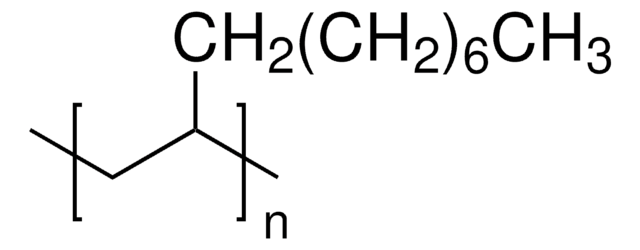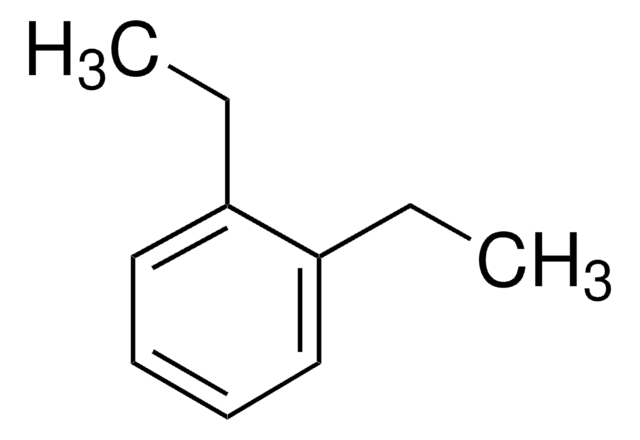30650
1-Decene
≥97.0% (GC)
Synonim(y):
1-n-Decene
About This Item
gęstość pary
4.84 (vs air)
Poziom jakości
ciśnienie pary
1.6 mmHg ( 23.8 °C)
Próba
≥97.0% (GC)
Postać
liquid
temp. samozapłonu
455 °F
współczynnik refrakcji
n20/D 1.421 (lit.)
tw
166.5-173.5 °C (lit.)
mp
−66.3-−66 °C (lit.)
gęstość
0.741 g/mL at 25 °C (lit.)
ciąg SMILES
CCCCCCCCC=C
InChI
1S/C10H20/c1-3-5-7-9-10-8-6-4-2/h3H,1,4-10H2,2H3
Klucz InChI
AFFLGGQVNFXPEV-UHFFFAOYSA-N
Szukasz podobnych produktów? Odwiedź Przewodnik dotyczący porównywania produktów
Opis ogólny
Zastosowanie
Hasło ostrzegawcze
Danger
Zwroty wskazujące rodzaj zagrożenia
Zwroty wskazujące środki ostrożności
Klasyfikacja zagrożeń
Aquatic Acute 1 - Aquatic Chronic 1 - Asp. Tox. 1 - Flam. Liq. 3
Kod klasy składowania
3 - Flammable liquids
Klasa zagrożenia wodnego (WGK)
WGK 3
Temperatura zapłonu (°F)
111.2 °F - closed cup
Temperatura zapłonu (°C)
44.0 °C - closed cup
Środki ochrony indywidualnej
Eyeshields, Faceshields, Gloves, type ABEK (EN14387) respirator filter
Certyfikaty analizy (CoA)
Poszukaj Certyfikaty analizy (CoA), wpisując numer partii/serii produktów. Numery serii i partii można znaleźć na etykiecie produktu po słowach „seria” lub „partia”.
Masz już ten produkt?
Dokumenty związane z niedawno zakupionymi produktami zostały zamieszczone w Bibliotece dokumentów.
Klienci oglądali również te produkty
Nasz zespół naukowców ma doświadczenie we wszystkich obszarach badań, w tym w naukach przyrodniczych, materiałoznawstwie, syntezie chemicznej, chromatografii, analityce i wielu innych dziedzinach.
Skontaktuj się z zespołem ds. pomocy technicznej






